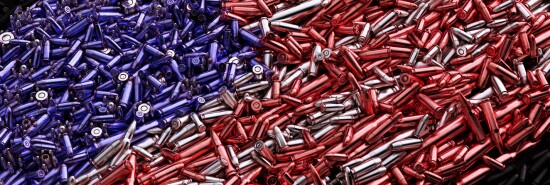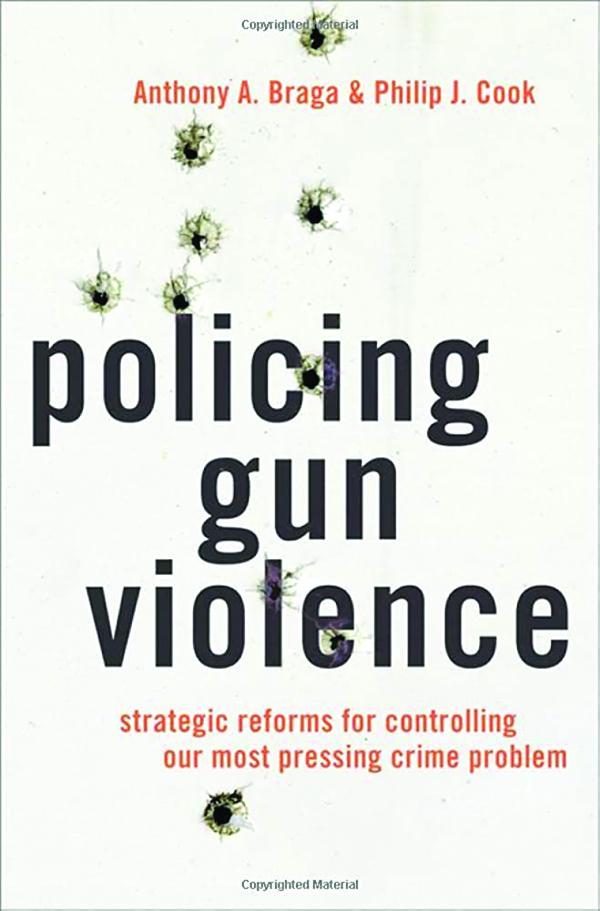
Solutions instead of slogans for reducing gun violence
Robert VerBruggen
America’s homicide rate has never been anything to brag about, but for a while it seemed to be heading in the right direction. It fell by half in the two decades between 1993 and 2013, thanks to a mix of increased incarceration, the modernized policing tactics exemplified by Giuliani-era New York, and an ever-debatable mix of other factors.

Since then, however, we’ve seen increases in 2015, 2016, 2020, and 2021, wiping out about half of that progress. This is a dire situation that cuts thousands of lives short and forces entire communities to live in fear.
Anthony A. Braga, a criminologist at the University of Pennsylvania, and Philip J. Cook, an economist at Duke, have been studying American violence for decades, with a focus on gun violence in particular, which accounts for most of our murders and which also includes tens of thousands of nonfatal shootings each year. In Policing Gun Violence, they offer numerous ways for American law enforcement to get a grip on the problem.
Their suggestions are rooted in solid evidence and, most importantly, constrained by a good sense of what is feasible given America’s constitutional and cultural realities. Ultimately, what Braga and Cook would like to see is a determined effort from law enforcement to stop shootings and keep guns out of the hands of criminals while respecting civilians’ civil rights. They make five proposals in particular.
Two of them are related, stemming from the insight that violence doesn’t happen at random but instead is intensely concentrated in specific places and social networks. The first of these is “hot spots policing,” which simply means keeping track of where crimes happen, increasing police presence in places where bad events are frequent, and, when possible, stopping illegal gun-carrying there. The authors caution against the heavy use of “stop and frisk,” which can bring down shootings but also alienates innocent members of the community caught up in the tactic. But they do support some use of street stops when police encounter genuinely suspicious people, as well as the “precision policing” that New York turned to more recently, where effort in hot spots is directed at the “relatively few individuals who make communities unsafe.” They also note other ways of reducing crime in specific locations, such as greening vacant lots.
The other tactic rooted in crime concentration is “focused deterrence,” drawing on the fact that just as violence is especially prevalent in certain places, it’s also concentrated in social networks such as gangs. The strategy involves keeping tabs on violent groups, offering social services to members willing to accept them, directly communicating that gun violence won’t be tolerated, and, when necessary, following up on that threat. As Braga and Cook stress, the message isn’t that police will outright ignore other crimes. It’s simply that gun violence is an extremely high priority and that law enforcement has the resources to make life miserable for any gang that fails to abstain from it, including by working with the federal government. Braga helped to implement this strategy in Boston, which saw youth homicides plummet. However, focused deterrence has to be implemented consistently and maintained over time, or the effects wear off.
The third strategy is more reactive in nature: When a homicide or shooting happens, solve it. This incapacitates the most violent people, grants justice to victims so they are less likely to retaliate on their own, and deters future shooters. Today, close to half of murders go unsolved, as do a large majority of nonfatal shootings.
For nonfatal shootings, simple resources are the biggest issue: The cases are often assigned to detectives with lots of other crimes to deal with, and cases that aren’t solved quickly and easily are frequently dropped. (Statistically, the gap in solve rates between fatal and nonfatal shootings opens up after this initial quick-solve period.) Treating nonfatal shootings more like fatal ones would clearly improve the solve rate. Beyond resources, though, boosting the solve rate for homicides entails better training and rigorous protocols for investigators, which Braga also helped to introduce in Boston.
Hot-spot policing, focused deterrence, and improved clearance rates all rely on good on-the-ground police work, which in turn relies on amicable police-community relations, something much of the country is lacking today. Every so often, there’s a police shooting that captures the public’s attention and stokes protests. When this happens, the public’s view of the police dims, and police officers back off their proactive work. Both defensible and indefensible police shootings can produce this reaction, but reducing police shootings in general could certainly make “viral” incidents less common, and that’s the fourth suggestion from Braga and Cook.
There are patterns in the data suggesting that many cities could reduce their officers’ use of lethal force substantially. Specifically, some cities have far higher police-shooting rates than others, even after accounting for crime rates and other obvious explanations. Phoenix, for instance, has about five times the police-homicide rate of Dallas, despite having less lethal violence otherwise. Braga and Cook’s proposals are a bit more scattershot here than elsewhere: They suggest better use-of-force protocols and accountability for officers who act outside of policy, and they draw attention to union rules that make accountability difficult, highlight efforts to have mental-health experts respond to certain calls, note the potential of body cameras to change behavior and resolve questions about uses of force, and suggest better medical treatment when someone has been shot.
Lastly, Braga and Cook suggest efforts to disrupt underground gun markets. This isn’t hopeless, even in a place as awash in guns as America, they contend. In inmate and arrestee surveys, for example, many criminals report that it takes a week or more to procure an illegal gun. (They can’t just go to gun stores, where, under federal law, background checks are conducted and records kept.) Though the data are sparse, this difficulty is likely greatest in places where guns are generally rarer and more restricted, such as the Northeastern states where criminals largely rely on weapons smuggled in from elsewhere.
For the most part, though, such smuggling doesn’t take the form of a large-scale criminal operation but instead consists of people and small groups getting guns in states where they’re plentiful and bringing them to places such as New York. And to make matters even more complicated, the landscape shifts frequently, with, for example, homemade “ghost guns” recently becoming a problem.
Preventing gun trafficking is basically a matter of collecting every piece of data possible on recovered crime guns and expending some resources tracking down the chain of custody. This means running ballistics, connecting guns to other crimes, tracing each gun to its last known purchaser, and following up on any resulting leads. Special attention should be paid to crime guns that were purchased from retailers recently, in which cases the legal buyers may have sold the guns on the illegal market themselves.
Gun violence doesn’t have to be as high as it is today. We know this because it was significantly lower just a few years ago. But getting back to where we were, to say nothing of continuing the improvement that used to be normal, is going to take a lot of effort. Policing Gun Violence provides a road map worth following.
Robert VerBruggen is a fellow at the Manhattan Institute.
